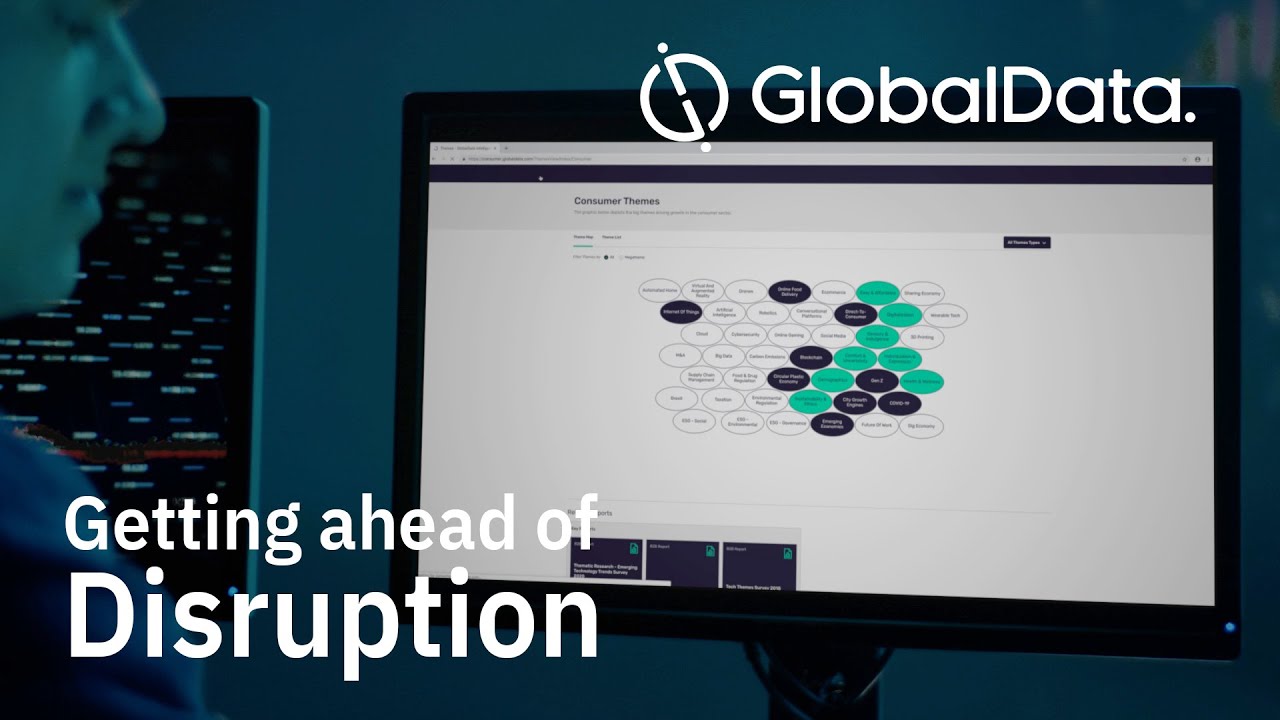Feature
Explainer: Why paediatric healthcare is furious with the FDA’s LDT final ruling
The US Food and Drug Administration clearance comes after the UK health authorities recommended the app over traditional sleeping pills. By Joshua Silverwood.

The ruling is currently in a ‘phase-out’ period in which the FDA will take a general enforcement discretion approach to LDTs. Credit: Pickadook / Shutterstock
The recent US Food and Drug Administration (FDA) final ruling declaring the world of laboratory-developed tests (LDTs) as medical devices has drawn some serious concern from across the US laboratory industry, who vehemently argue that the decision will set back paediatric care by restricting doctors in the kinds of tests they can run and speed at which they can access them.
The new ruling, which means that screening tests developed by laboratories require some form of FDA approval before they can be put into commercial use, took central focus during an expert panel at the Chicago conference of the Association for Diagnostics and Laboratory Medicine (ADLM).
The ruling is currently in a ‘phase-out’ period in which the FDA will take a general enforcement discretion approach to LDTs, with plans for the full enforcement of FDA regulations expected by 2028. The decision has been strongly controversial among members of ADLM.
At its annual Chicago meeting, guest panellists at a special session for the ADLM decried the ruling as ‘burdensome’, citing an internal survey that found that many labs do not have the staff or finances to effectively comply with the new FDA ruling once it comes into full force. In addition, the ruling would potentially impact the vital supply of diagnostic tests available for institutions such as children’s hospitals. Conversely, regulatory experts argue that the FDA’s rule brings certainty to a market that has long grown comfortable with a lack of regulation.
Speaking at the ADLM conference on 30 July, Jeff Hollett, senior science policy analyst for the American Medical Association (AMA), said: “LDTs, as they formerly stood, allowed for physicians to practice at the top of their licence, similar to how a physician can prescribe a medication off label if there is evidence for its use. LDTs allow for physicians and laboratory professionals to diagnose and to treat when there is evidence for their use and FDA approval is far too slow for the rapidly evolving rate of diagnostic medicine.”
The story so far
In the wake of the Covid-19 pandemic, the in vitro diagnostic (IVD) market worldwide, but more specifically in the US, went from strength to strength, seeing significant market growth between the onset of the pandemic in 2019 and the start of this year. In that time, research by GlobalData found that the global market size for in vitro diagnostics had ballooned to approximately $60.3bn, propelled by the unparalleled investment seen in the sector alongside a Trump presidential initiative in 2020 that saw the Department for Health and Human Services (HHS) ordering the FDA to stop requesting premarket approval for clinical laboratory tests.
This prompted industry concerns that the rate and frequency at which new and novel tests, not just in the field of virology but across the spectrum of healthcare, were being produced at a rate that could not guarantee consistent, actionable, and reliable results. In response to this, on 29 April 2024, the FDA issued its Final Rule, making clear that IVD products and LDTs qualify as medical devices and as such are subject to pre-market approval.
Total annual production
The decision comes after the much more carefully workshopped but politically troubled Verifying Accurate Leading-edge IVCT Development (VALID) Act was first introduced to Congress in 2020 in a bid to modernise the regulatory framework for IVDs and LDTs. However, the act has repeatedly failed to gain traction in the US Congress leaving the FDA to cover the shortfall.
Paediatric pushback
Whilst the decision made significant waves across the industry, the paediatrics industry has reacted particularly strongly to the Final Rule. One of the key issues revolves around how US insurers will now consider paying for these tests on a patient’s behalf.
Where FDA clearance is required for pre-market approval, it is similarly required for an insurer to pay for the test. As a result, tests that insurers and public insurers such as Medicare and Medicaid would typically have paid for, now may not.
Shortly before the ruling both the American Hospital Association (AHA) and the Children’s Hospital Association wrote to the FDA urging them not to enact the final rule and maintain its discretionary approach.
In its letter to the FDA, the Children’s Hospital Association wrote: “It is important to note that, though children’s hospitals account for only 2% of hospitals in the US, they account for about 45% of all hospital days for children on Medicaid. As a result of the heavy reliance on Medicaid, which often under-reimburses for costs of care, the budgets of children’s hospital laboratories are tight, and the financial resources and staff needed to pursue many complex reviews under the proposed rule will be in addition to resources already used to meet the stringent regulatory and accreditation requirements.
“We know that the for-profit sector has not—and likely will not—step in to make tests for paediatric and orphan diseases as the market is too small to be profitable. Similar to the development of new pharmaceuticals, which are usually developed for adults, children are often left behind in the development of commercial testing, given the small market and highly specialised nature of paediatric diseases. As a result, many needed tests for children, including those with rare, uncommon, and often life-threatening, diseases will no longer be available with significant negative implications for their overall health and wellbeing.”
Of course, there is a business aspect in all of this with paediatric medicine subject to the same market forces as the rest of the US-based healthcare market. A large part of the intent behind the regulation of LDTs was to curb the rate at which larger labs can produce potentially unverified or unreliable tests while expecting to maintain the same levels of growth seen during the Covid-19 pandemic.
At the Chicago ADLM conference, Dennis Dietzen of the Washington University School of Medicine was quick to refute that this should apply to the purpose-built and thin margins of LDTs intended for pediatric use.
Dietzen said: “These tests, by and large, don’t make anybody any money. So, we operate on a shoestring. We do things as efficiently as we possibly can. And if we have to expend more resources, an administrator might come down to the laboratory and say that we can’t support this anymore. And that’s the point at which we would have to stop doing it and refer it out.”
The physician can look at the reports through our web application, and then those reports can be shared with a patient
Future Fertility CEO Christy Prada

Phillip Day. Credit: Scotgold Resources
FDA stands strong
Despite the pushback, the FDA may still be unwilling to reverse course on its decision or make concessions for particular sections of the industry.
Speaking with Medical Device Network, Kyle Faget, co-chair of Foley’s medical device and equipment group, detailed why this ruling has been a long time coming and how the FDA is unlikely to change its mind now. Noting that whilst there is still a carveout in the ruling allowing for the use of unapproved LDTs in very limited circumstances, the FDA is looking to keep ahead of the pace at which the LDT market has advanced.
Faget said: “I think what the FDA was really trying to get at is because in the old days, LDTs were tests that were developed in a single hospital system and used in a single hospital system. That’s just not how LDTs in the modern day are functioning. They are being developed by highly sophisticated laboratories and being sold across the US and across the world in many cases for diagnostic purposes.
“So, from the FDA’s perspective that’s a whole different commercial activity than what it was when the FDA was choosing to exercise its enforcement discretion. In other words, the FDA’s position is that they always could have regulated LDTs but have chosen not to because they were low risk.
“I think what we will see in paediatrics, and I could be 100% wrong on this, where you have diagnostics that are going to be used across the United States, I think that so long as the FDA can come to an agreement that the FDA can regulate these kinds of tests, they will. But I think you will still see a lot of enforcement discretion for a lot of the old-school LDTs where it is a single lab being used in a single facility like a single hospital situation.
“The last thing the FDA wants is for there to be a test out on the market for something like Down’s syndrome that is not actually effective and is out in the marketplace. That is exactly the FDA’s concern – that there are diagnostic tests that don’t work correctly or are giving erroneous results.”

Caption. Credit:
RPM for cancer patients
The National Cancer Institute (NCI) forecasts that over two million new cancer cases will diagnosed in the US in 2024.
With a large variety of types of cancer and even a larger variety of the types of therapy, cancer care is particularly complicated, with a complex ecosystem of providers, patient symptoms, and myriad moving parts that can affect patients.
“It's therefore imperative for physicians to have as much access to patients as possible,” says Veris Health chief operating officer Brian deGuzman.
Veris has created a cancer care platform in the form of a smartphone app that enables patients to have continuous access to their care teams, thereby allowing healthcare providers to fill in a lot of the gaps that cancer patients used to have.
According to deGuzman, studies have shown that RPM and patient-reported outcomes improve cancer care.
“In particular, the process improves medium and long term-survival rates, reduces hospital admissions, and improves patient treatment by staying on treatment longer and engaging them more tightly with their providers,” says deGuzman.
The Veris platform allows for symptom reporting so healthcare teams can monitor patients’ vital signs, and there is a family application that allows for patients to invite family and close friends or caregivers to participate in their care and monitor them.
“There's also a clinician portal, which allows clinicians to have continuous access to patients’ vital signs and symptom reporting anytime they want and anytime the patients report them,” says deGuzman.
“It allows us to have this virtual care provision that improves the connectivity between patients and the providers and fills a lot of the gaps during times they weren't being seen by their healthcare provider in between visits for chemotherapy and otherwise,” he explains.
Having these provisions available in an app means that cancer patients have a more continuous care component to make them feel less alone during their experience of the disease.
“If we have the ability to monitor patients’ vitals like heart rate, blood pressure, and oxygen saturation, it gives clinicians a much broader and longitudinal view of the patients and where they're at just by their vital sign monitoring on a daily or twice daily basis, rather than once every one or two weeks when they come in for their therapy,” says deGuzman.
Taking the example of patients being to report their temperature in Veris’s app, deGuzman notes that one of the most common complications cancer patients undergoing chemotherapy can experience is neutropenic fever, a situation in which chemotherapeutic agents drive down their white blood cell count, resulting in an immunocompromised state.
“These patients are at high risk for developing infections, which oftentimes can result in fever,” says deGuzman.
“It's therefore important for physicians to see those trends in patients’ temperature so they can have a much earlier signal that a patient may be in trouble than if they wait for the fever to develop to such a point where they start to get symptoms. By that time, the infection has taken hold, meaning that patients are more difficult to treat and that outcomes are much worse.”

Caption. Credit:
In the form of apps, RPM can encompass a broad range of support. In this format, RPM facilitates interventional approaches and continued communication between patient and practitioner, presenting the opportunity for patients to engage with their healthcare conditions and to manage them, both on a psychological and physiological level, more effectively.
Chinese dominance and Western complacence
For three decades, the Chinese Government has had a strategic vision for the REEs industry and it now dominates the global supply chain. In 2021, Chinese mines produced 168,000t of rare earths, almost 60% of total global mining output, according to the US Geological Survey. In 2020, the country also produced 85% of the world’s rare earth refined products, according to Roskill.
About 70% of global production is consumed within the Chinese domestic market. Chinese production at both the mining and refined stages is controlled by quotas assigned to six state-owned enterprises, which are highly integrated throughout the REEs supply chain.
Total magnet rare earth oxide demand is forecast to jump at a compound annual growth rate (CAGR) of 9.7% between 2021 and 2030, while REE prices are projected to surge at a CAGR of between 5.6% and 9.9% over the same period, according to Adamas Intelligence, a research and advisory firm.
The Western world does not have an integrated REEs supply chain in the same way that China does because it simply did not consider it important until the post-Covid era. However, the pandemic showed the significance of more localised supply chains. Temporary trade restrictions and shortages of pharmaceuticals, critical medical supplies and other products highlighted the weakness of complicated, globalised supply chains. The Western world has become too complacent in allowing rare earth production to be outsourced to China.